Britain’s biggest suppliers are already squeezed by soaring inflation. Now with tax rises and a recession on the way, it’s unlikely to get any easier
Downloads
-
OC&C Top 150
PDF, Size 0.94 mb
With inflation at its highest rate for 40 years, interest rates spiking, the pound sliding and consumer confidence at historic lows – any hopes for a little post-Covid stability have been firmly quashed.
No sooner has the UK food and drink sector emerged from a once-in-a-lifetime shift in consumption habits during the pandemic, it now faces a once-in-a-generation squeeze on consumer incomes and spending.
For a brief window of time the UK supplier base looked to be heading towards calmer waters. The OC&C/Grocer Top 150 report on the UK’s largest food and drink players points to an industry exiting 2021 in relatively rude health, having ridden the stresses and supply challenges of the pandemic.
The most recently filed accounts of these suppliers are by nature historic, and show an industry bouncing back to its highest growth rates for three years – with overall growth jumping from 1.1% to 4.1%, well ahead of inflation at the time.
Some of this represents a rebound in those categories most hit by Covid, most notably prepared meals (up 23.4% from a 8.7% drop in 2020) and soft drinks (up 13.6% from a previous drop of 8.9%) after being hit by the out-of-home sales slump.
But notably every major category ended 2021 at a higher level than it enjoyed pre-Covid in 2019, including an overall 30.9% jump in meat, fish and poultry and 13.5% in dairy. “Last year was a pretty healthy combination of circumstances for a lot of these consumer goods producers, as you had some channels opening back up on top of a heightened share of consumer spend going into these categories and the fiscal stimulus still flowing through to the wider economy,” says OC&C global managing partner Will Hayllar.
Inflation started creeping upwards towards the end of 2021 and was widely expected to rise further in 2022, but it was assumed to be manageable until Russia’s invasion of Ukraine sent energy prices soaring and supercharged input costs. The UK’s headline rate hit 10.1% in September. While this is broadly similar to inflation of 9.9% across the eurozone, expectations are for UK inflation to be notably higher than other major economies across 2023. With steepening interest rates the expectation is of a long recession.
“Where we are today is a genuinely tight squeeze on living standards and it looks like it could be becoming tighter over the next six to 12 months with the prospect of tax rises and cuts in public expenditure, and the Bank of England likely to increase base rates,” says Shore Capital director Clive Black. “That’s a really tough backdrop for the food manufacturers.”
HSBC mid-cap analyst Doriana Russo notes inflation has “increasingly become a problem for everyone” – consumers, manufacturers and retailers – noting there have been at least four rounds of price hikes recently in an environment where supermarkets are trying to hold ground against the renewed threat of the discounters.
By and large, so far manufacturers have passed through underlying input cost inflation to retailers – despite some high-profile disputes – but the more rounds of price increases, the more resistant manufacturers may find retailers become, adds Black. “Where we’re getting to now is a particularly challenging time, which leads to concern about shopper capability to take the amount of cost recovery that the industry needs to maintain margins.”
“Next year will be even worse than 2022 from an inflationary point of view. This is a two-year game and we’re not even at half time,” says Mark McKenzie, group sales director for Nestlé UK & Ireland. “What’s critical for us is we work day and night to reduce our costs and become more efficient so we can make this situation slightly more bearable for shoppers.”
Charlie Bigham’s CEO Patrick Cairns agrees: “We haven’t passed on all the cost inflation we’ve had as a business, so we’ve had to make efficiency savings and there has been some impact on our margin. But that means we are offering better value for money for consumers now than we were previously because our prices have inflated less relative to the wider economy.”
More pressure
The Top 150 margin picture heading into this wave of inflation was fairly robust. Aggregate operating margins increased by 0.3 percentage points to 6.2% last year – their highest level since 2017 and closing back in on the long-term average of 6.4%. Even given the largely successful pass-through of inflation thus far, there is expectation margins will have been under pressure this year and more pressure again next.
“We definitely expect margins to take a hit for consumer goods players,” says OC&C partner Nilpesh Patel . “We are already seeing varying abilities to pass through prices, where those who have more pass-through models, such as own label or commodity-based players, may be able to protect margins to some extent, while branded players will have to negotiate hard to maintain price rises in line with inflation.”
He adds retailers are anecdotally beginning to “push back” on brands over pricing, meaning pressure is mounting on suppliers to think about other ways to cut costs through their value chains.

On top of short-term and rapid inflation of input costs, UK suppliers also face the more fundamental issue of cost of labour inflation – exacerbated by the post-Brexit shrinking of the EU labour pool.
Perhaps surprisingly, cost of labour metrics improved somewhat last year as revenue growth outstripped wage increases despite this apparent looming labour crisis. Revenue per employee rose 4.1% from £255k in 2020 to £266k last year, while staff costs as a proportion of revenue dropped to 14% from 14.2%.
Hayllar explains: “Some of the experimentation that was forced by Covid and short-term labour shortages would have stuck, while some of those extra costs and complexities of operating through Covid have eased, so you are seeing some lasting dividend.”
However, the labour issue is still very real. Staff costs are universally growing – up 3% for branded players and 2% for own label – while overall manufacturing job vacancies are at 20-year highs.
HSBC’s Russo suggests suppliers have started to tackle the longer-term response to labour costs and shortages: “Thanks to the tax rebate offers throughout the pandemic, there has been a huge amount of investment in automation, which has led to increased productivity and created a competitive advantage for larger players with the balance sheet power to invest.”
Overall there is some evidence capex rebounded across the supplier basis, with capital spending up to £2.2bn from £1.95bn in the previous year, but this remains around 5% lower than pre-Covid levels and early data suggests it could be heading downwards again this year as companies preserve cash.
Brands in particular are coming under pressure as consumers prioritise value and potentially downtrade to cheaper own label products. Top 150 data shows own label was already growing faster than branded goods even before the wave of price rises – with own label sales up 6.8% compared with 2.8% for branded last year. This partly represents a rebound from historic negative growth for own label in 2020 as consumers switched to trusted brands in the pandemic (last year brands grew by 3.3% and own label declined by 0.7%). Own label has also benefited from category mix, given heavy exposure to fresh prepared foods, which suffered during the pandemic.
But own label is also benefiting from wider inflationary and retail trends, which are seeing discounters grow market share. In particular, larger own label players are benefiting from close relationships with the retailers given the extra sales volumes involved – with own label suppliers with sales over £500m growing at 7.7% and under £500m 3.1% (slower than their similar-sized branded contemporaries).
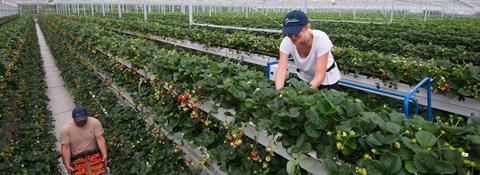
While own label growth is evidenced by the rapid market share growth of the discounters, evidence of direct consumer downtrading has been less obvious. Hayllar suggests downtrading is only likely to have become a significant factor within the past couple of months as consumer spending held up relatively strongly over the summer. “In some ways people may have been putting off difficult decisions, but that’s definitely very real now,” he says. “You can clearly see it in the acceleration of the discounters, but all retailers are looking at their assortments to ensure they’re offering value.”
In periods of high inflation, OC&C suggests that for every 1% of food price inflation above 2%, consumers offset 60% of these price rises by trading down. “The drinks category has traditionally been somewhat protected from harm during previous recessions, but that is not to say it’s going to happen in the future because we’re facing a very different environment,” says Suntory Beverage & Food GB&I FD Daniel Lander.
Nestlé’s McKenzie adds: “Consumers are definitely buying less product and trading down the products they used to buy, but it varies hugely by category.”
However, downtrading is not all bad news for brands, given a crucial element of belt tightening can be downgrading from restaurant or takeaway meals to supermarket goods. “People are looking for more affordable options for quality dining,” says Bigham’s Cairns. “So the downtrading we are seeing is from casual dining out back into the home and into our category.”
Additionally, the intensifying squeeze on consumer incomes is likely to have an uneven impact across consumers, with the lowest quintile of incomes seeing discretionary spend drop by 11% in 2022 and the top two quintiles as yet unaffected.
“It’s a difficult fundraising environment and a difficult environment in which to conserve cash – that is not a great combination for smaller players”
These factors mean the premium space is still not an unattractive space to play in, despite the wider hit to consumer spending.
“Typically the premium sectors stay relatively resilient in economic downturns,” says Patel. “But that’s not to say every single play that has a premium position will win. Consumers will be very careful about where they are spending their money.”
However, the fact that Waitrose is losing share to rival grocery across the value spectrum is evidence that more affluent consumers are changing buying habits too, McKenzie notes: “Where you are higher up that hierarchy of premiumisation, you’ve got a long way you can come down and people are coming down fast.”
Squeezed middle
There may, then, be a squeezed middle of suppliers – under pressure from better value own label and finding more affluent consumers unwilling to trade back into mid-tier brands. “Players in the middle may struggle if they don’t have a clear value proposition,” Patel notes.
Success is likely to come back down to strength of brand with mid-priced market leaders, such as Cadbury, Coke and Heinz finding it easier to maintain share, while less mainstream and traditional brands are squeezed by downtrading.
In that sense it could be a particularly hostile environment for challenger brands, with all major brands (with the exception of Ribena in the fast-recovering soft drinks category) growing ahead of their category average last year, according to OC&C.
“In terms of brands, bigger is often better in the sense that they’re seen as safer and more secure by suppliers and customers,” says Damian Thornton, MD in the European consumer food & beverage team at Piper Sandler. “It’s a difficult fundraising environment and a difficult environment in which to conserve cash – that is not a great combination for smaller players.”
Charles Lanceley, head of UK food and beverage at Alantra, concurs: “Many smaller brands have focused on growth and have much less experience of managing input cost inflation and having those tough conversations with retailers about the value of their products.
“If Tesco are prepared to delist Heinz Beanz, they’ll delist someone with £5m of sales in a heartbeat.”
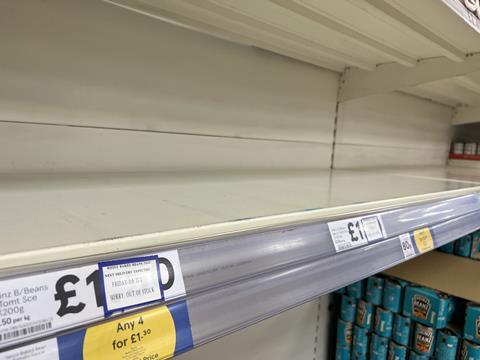
Retailers under pressure from the discounters are likely to cut SKU numbers and consumer branded choice to protect margins, meaning brands will need to demonstrate genuine value, particularly, as HBSC’s Russo points out, the unusual level of consolidation in UK grocery compared with other markets in Europe.
Patel argues challenger brands will continue to thrive if their product is one consumers value and they can still benefit from diversified consumer tastes and flexibility, while retailers will still be mindful of those brands likely to drive future category growth.
“There will continue to be an important role for smaller growth brands because they are typically adding a measure of excitement to a store fixture and hitting on trends beyond just price,” he says. “But they have to be very sharp and laser-focused on hitting those trends and have the financial discipline in place earlier in their evolution than they may have done in the past as competition for shelf space will intensify.”
Rising interest rates and the rising cost of capital could especially affect those smaller suppliers using debt to finance growth – while those more indebted companies generally may find their competitive position materially weakened as grocers are less likely to be accommodating to additional costs related to debt.
This environment is likely to exacerbate the gap between winners and losers – and potentially the gap between those with the balance sheet strength to survive and those facing a cashflow crisis. “Those stronger businesses may be generating enough cashflow to be able to reinvest in their business and be confident about their prospects. This only grows the gap between those struggling amid this uncertainty and those that have the cash to consolidate their positions,” Hayllar says.

Silver linings
While this is likely to see more variance in financial performance, there are arguably opportunities for suppliers to ‘win’ in this environment through differentiation and offering customers perceived value. OC&C notes vastly more market share churn during recessions, with 6.1 percentage points of share change in the recessionary 2008-2010 compared with just 2.5 percentage points in 2017-2019 across fmcg categories.
The UK’s economic struggles should also be seen in the context of enduringly low unemployment, with joblessness typically having a far more material impact on consumer behaviour and spending on essentials like food than more marginal hits on discretionary spend via inflation or increased housing costs.
“Geopolitical uncertainties make it more difficult to predict how things emerge, but unlike 2009 we should bounce back quickly because the supply chain demand imbalances coming out of Covid and Ukraine should resolve themselves to allow more normal levels of growth and inflation,” says Piper Sandler’s Thornton. “In general, a bit of inflation is a good thing,” he notes, given the operational gearing suppliers and retailers get from passing higher prices through their businesses.
The optimism of the post-Covid rebound is over, but market disruption creates new opportunities. Food and drink will continue to enjoy resilient consumer demand despite the pressure on spending power. Those with propositions offering shoppers and retailers real perceived value – wherever they play on the value curve – can emerge from the current turmoil with stronger positions as weaker players fall away.
Downloads
OC&C Top 150
PDF, Size 0.94 mb
The Big Squeeze: OC&C 150 supplier rankings 2022
- 1
 Currently reading
Currently readingThe Big Squeeze: OC&C 150 supplier rankings 2022
- 2
- 3
- 4











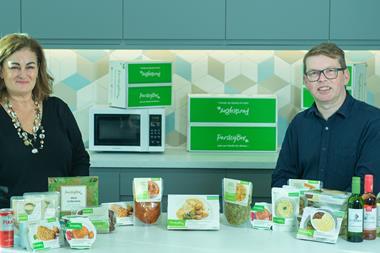


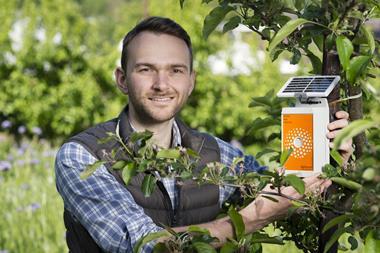
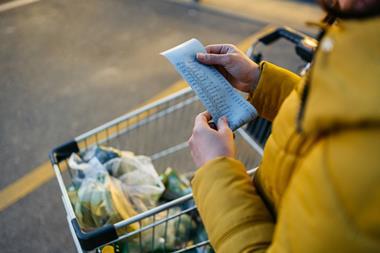
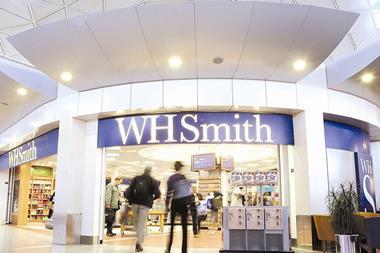






No comments yet